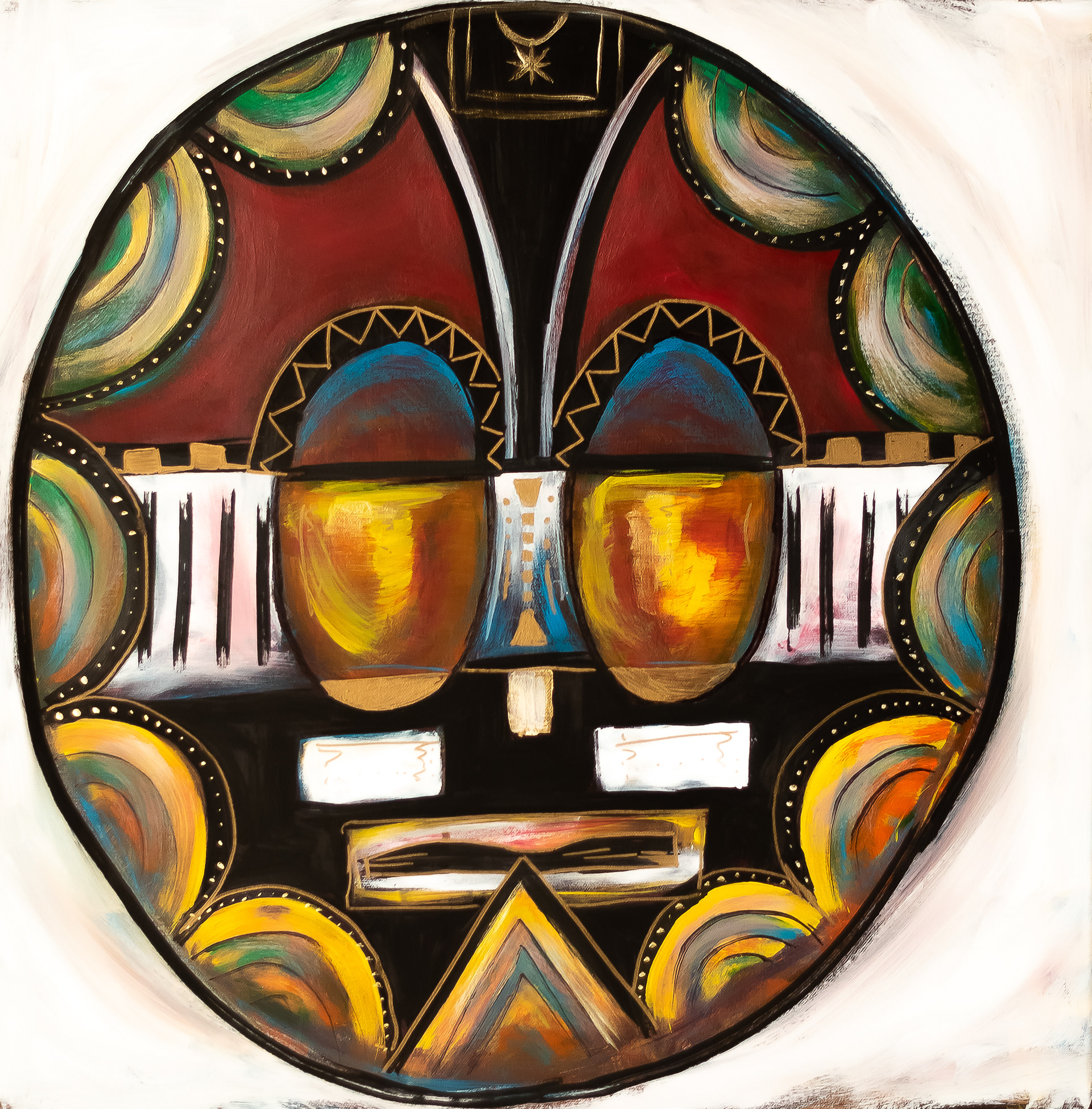Video of the artist painting "Plantation Mentality" in their studio.
Masks have played an integral role in cultures around the world. From the Japaneses' use in Noh and Kyogen performances to Americans' minstrel-use of blackface to mock and demean people of color, masks are often purposed to convey meaning and emotion. Throughout history humans put on masks for various purposes of celebration, ritual, even protection. They can be made from a variety of materials, simple or intricately designed and decorated. Recently masks have taken on new significance with the rise of global pandemics increasing the demand for protective face coverings.
Specific to the Black community mask have held an array of purpose through the centuries. Before colonialism indigenous-Americans and Africans use masks for stories, entertainment, rituals, and ceremony. Masks were considered to evoke spirits, representing groups of people, animals, nature, and other entities not personified. During slavery masks were used as tools for survival allowing slaves to attend secret gatherings and communicate with less fear.
Even with blackface perverting American culture into the 21st century, Black Americans have co-opted mask for their own purposes. Today, Black people all over the country use masks in their own creative ways to express themselves and explore their identities. From intricate beaded masks used in Mardi Gras celebrations in New Orleans to African-inspired masks used in dance performances, masks remain an important and vibrant part of Black American culture.
These mask paintings are an expansion of black peoples’ artistic expression. Each piece tells a story and captures the essence of Black American culture. The bright colors and intricate designs illustrate the beauty and complexity of Blackness. They serve as a reminder of the cultural depth and complex unity the Black community contains. These masks are not just a form of art, but a symbol of identity and pride for a community still constructing its status as Americans.
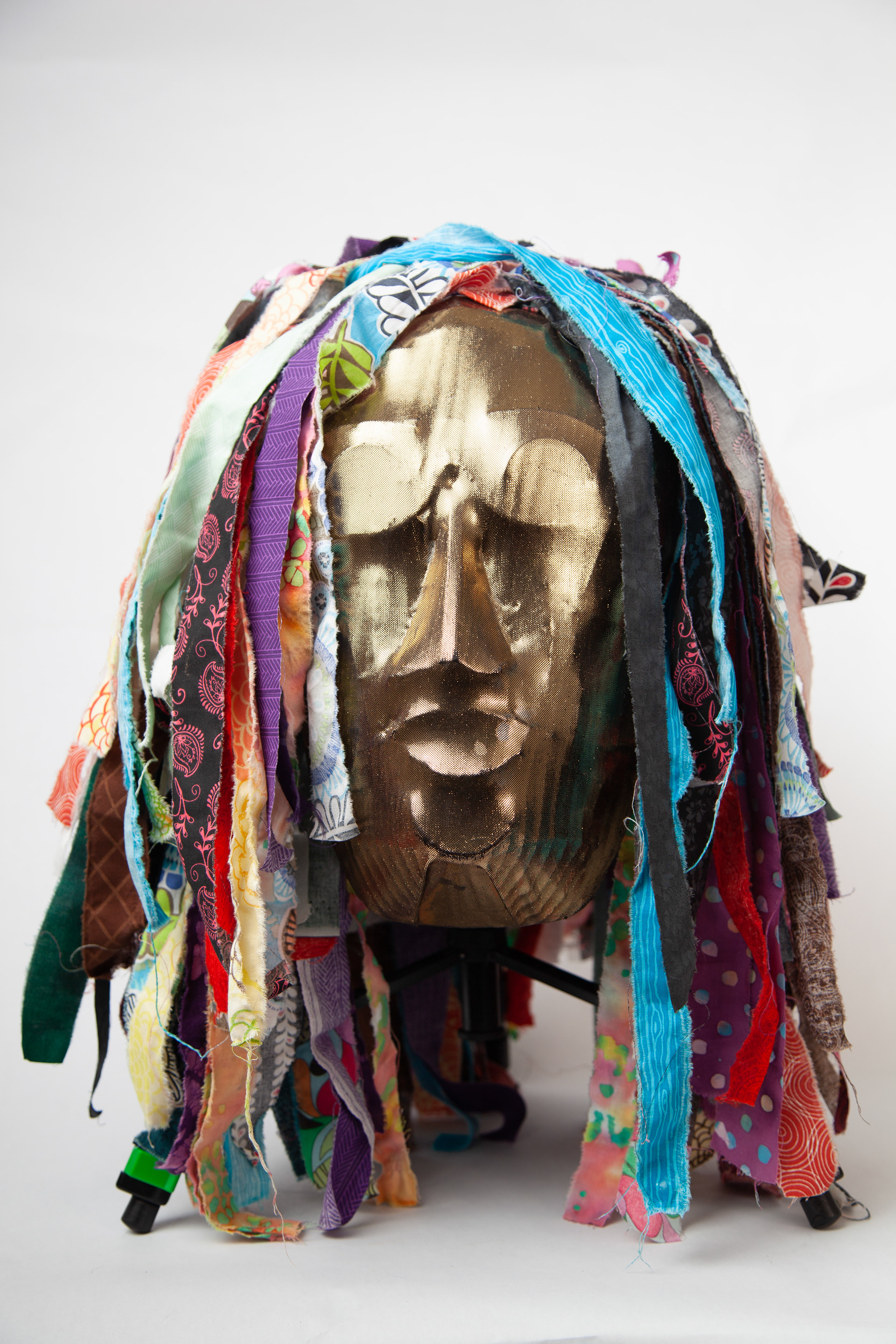
Artist's Ceremony Mask
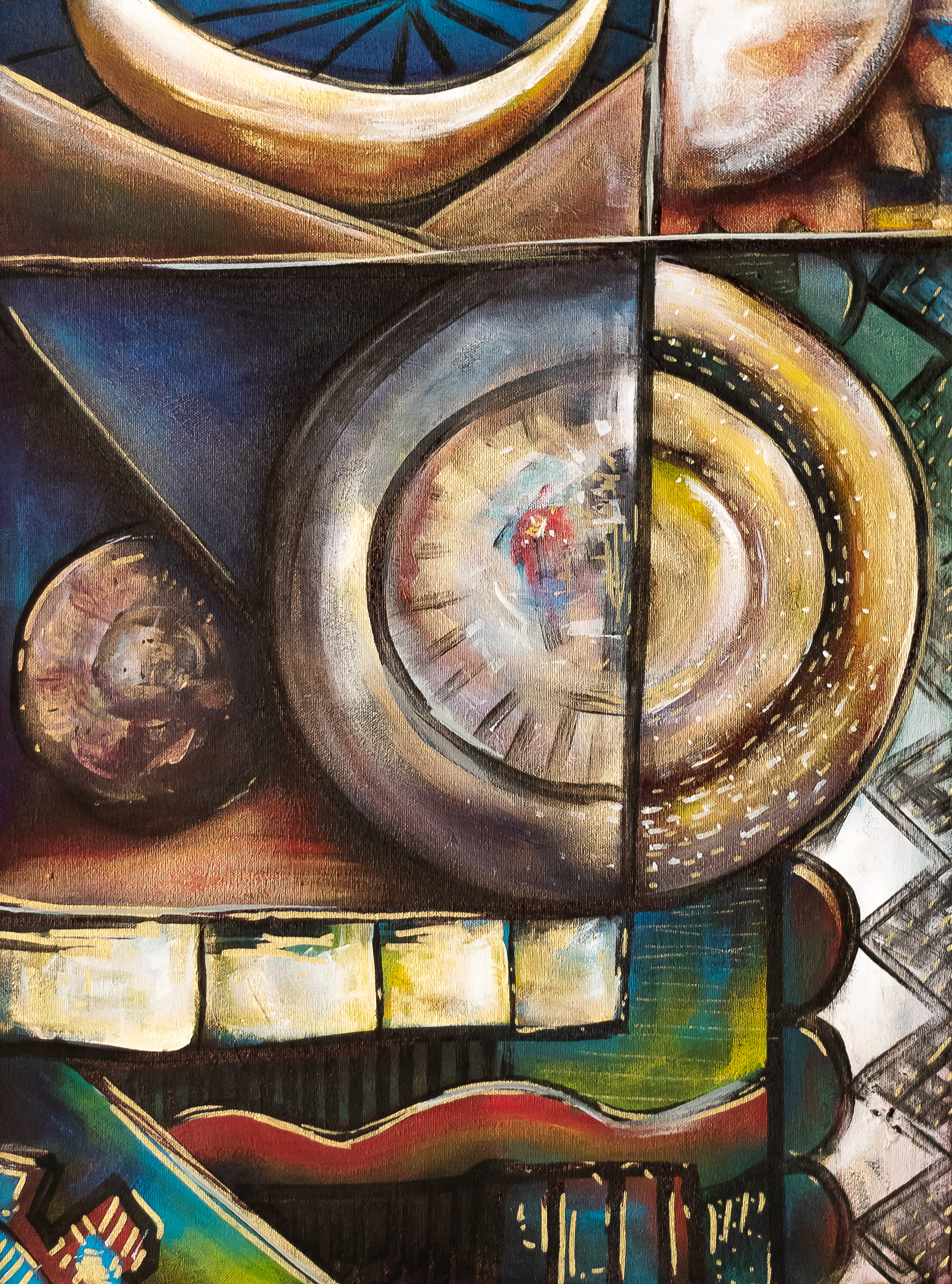
Revelation Mask
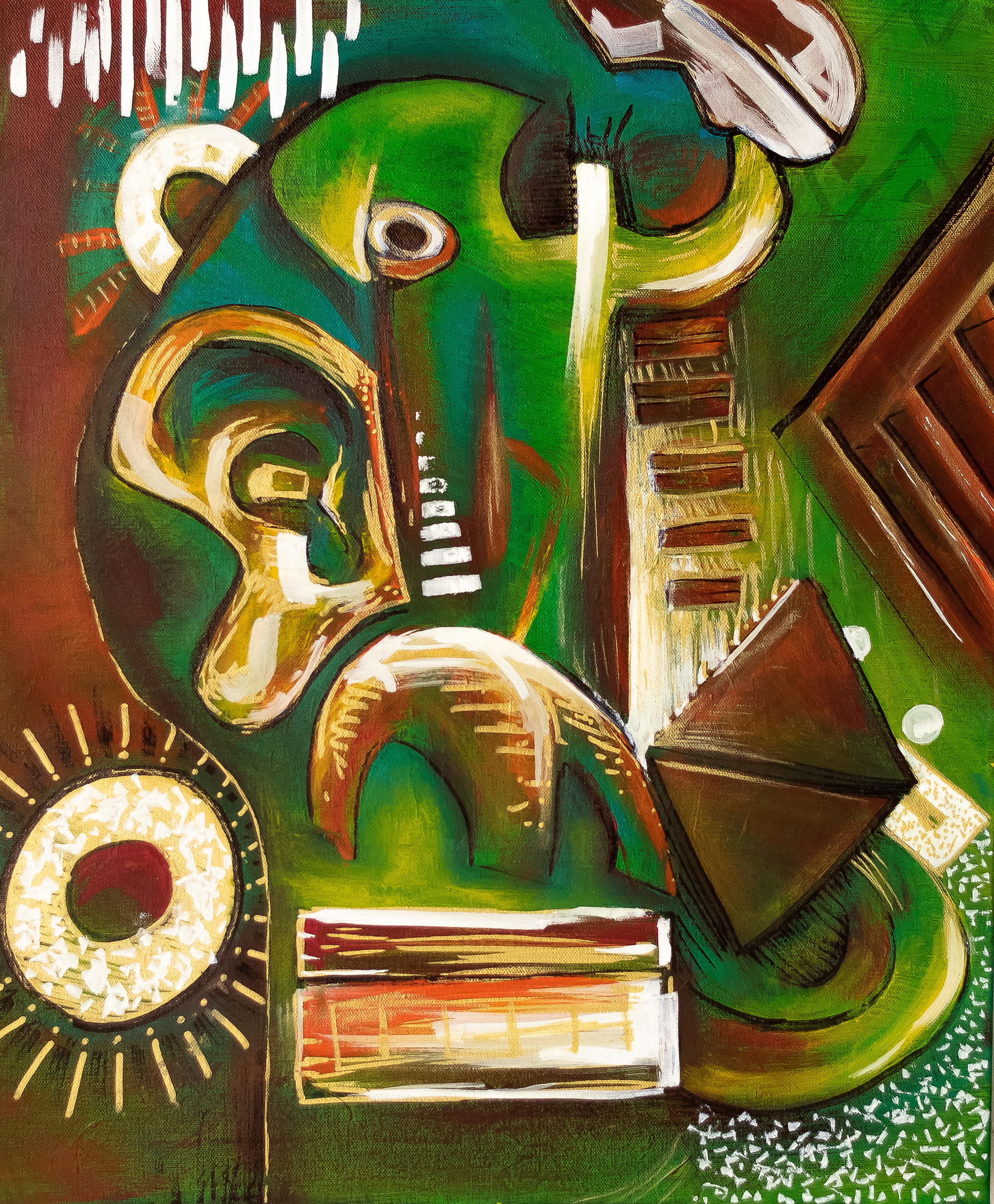
Pandemic Mask

Artist Mask 1
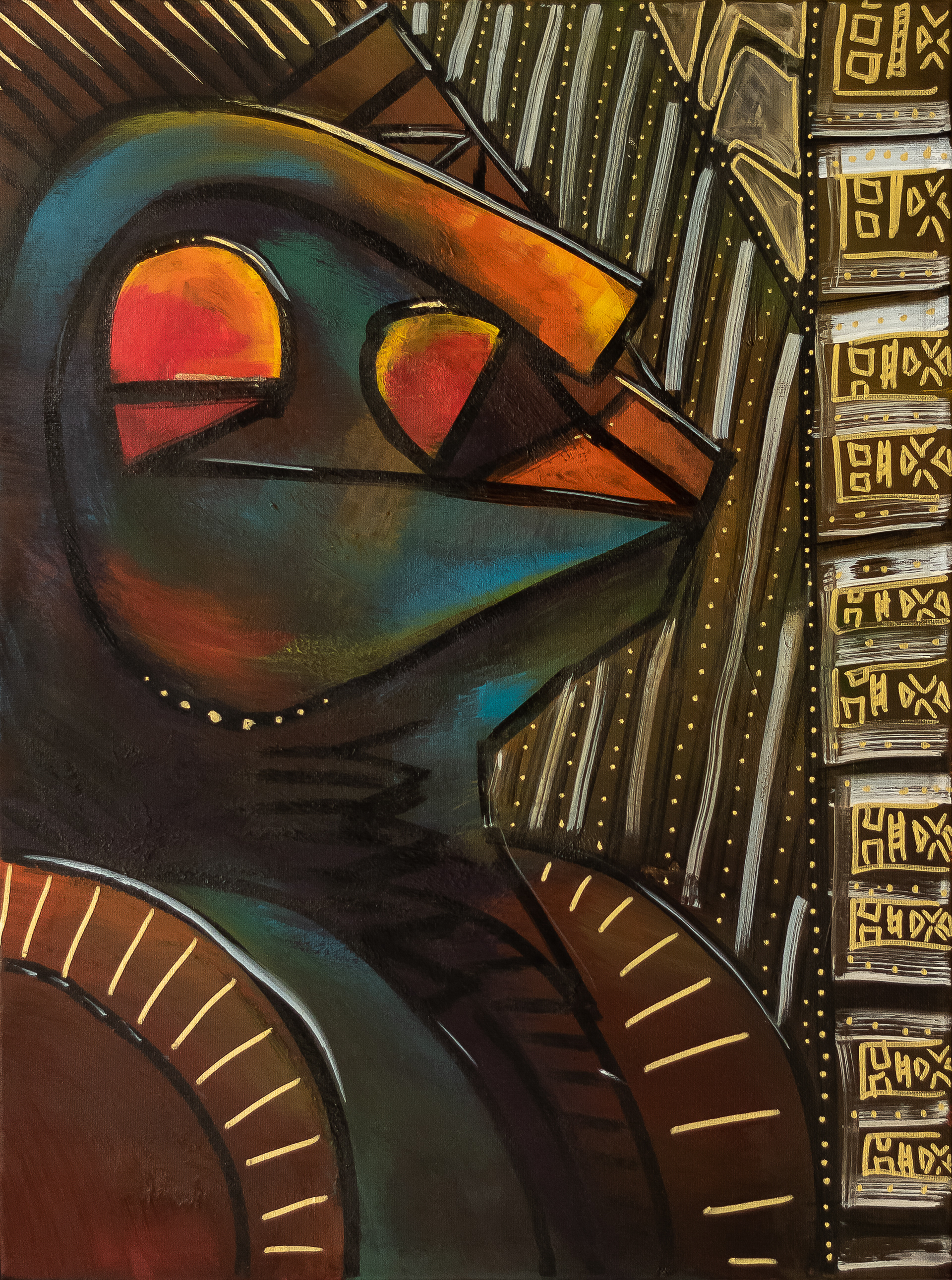
Artist Mask 2
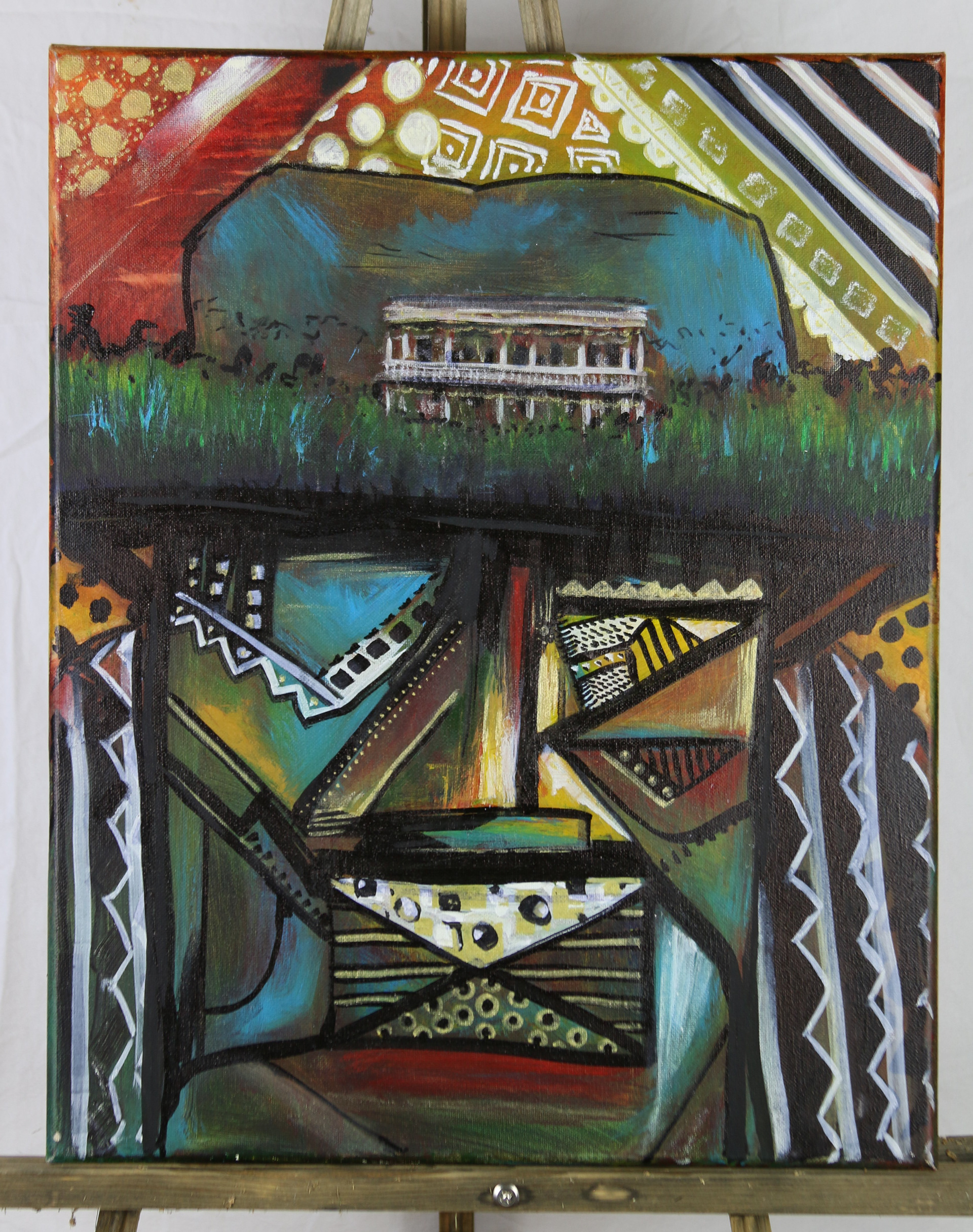
Plantation Mentality
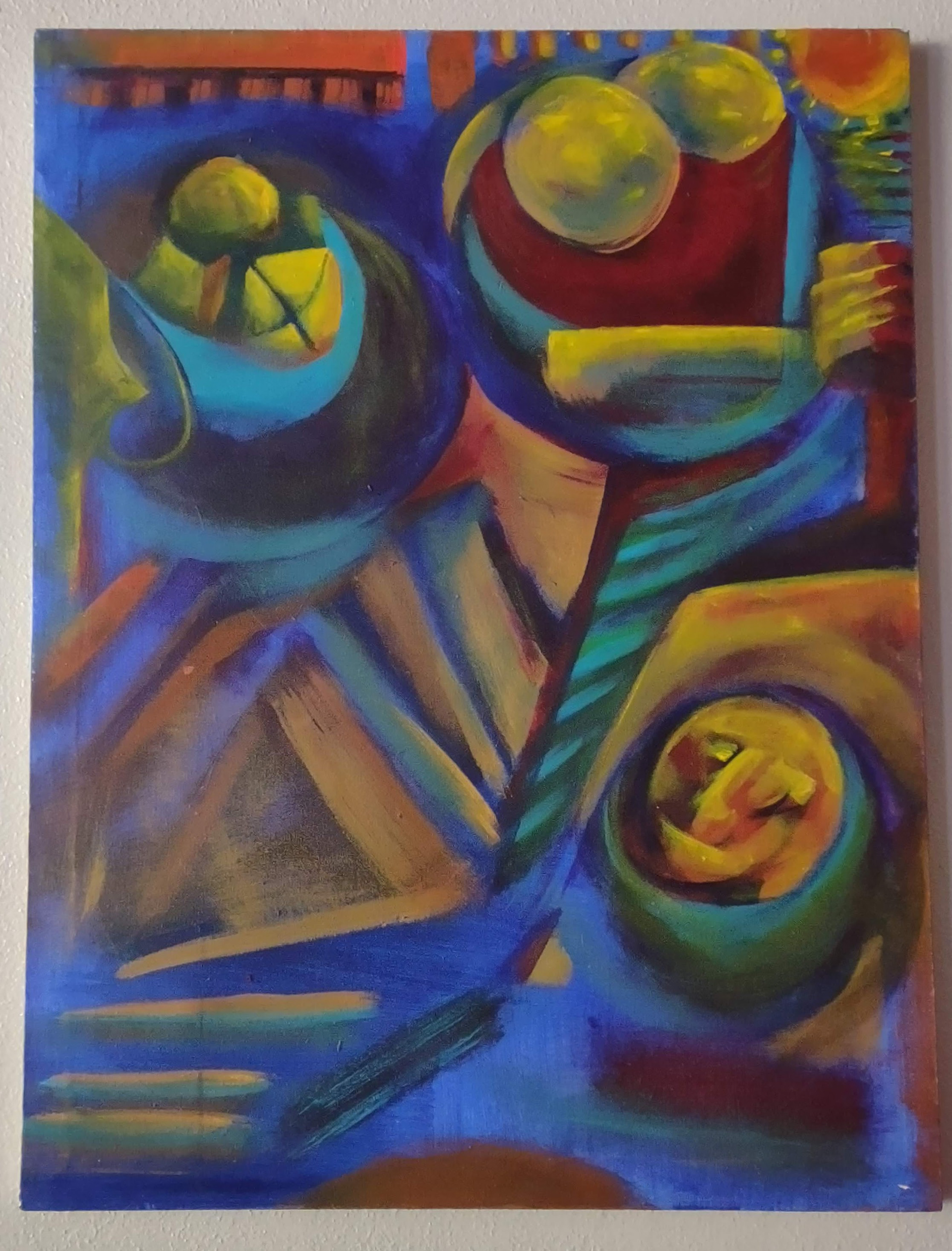
A Journey in Progress
